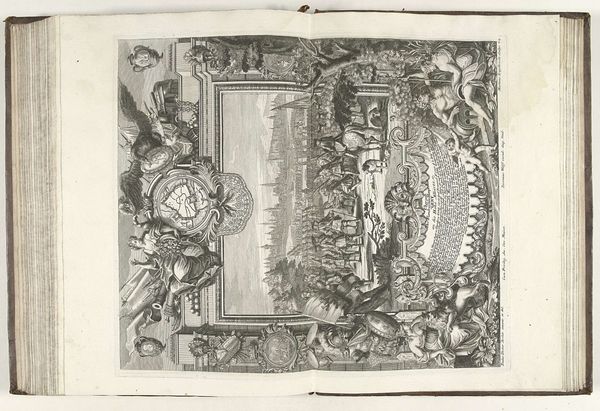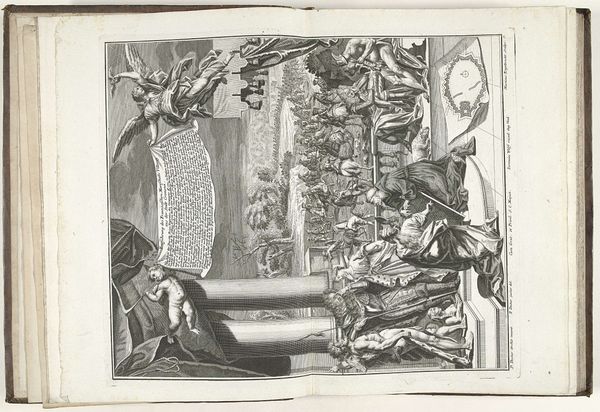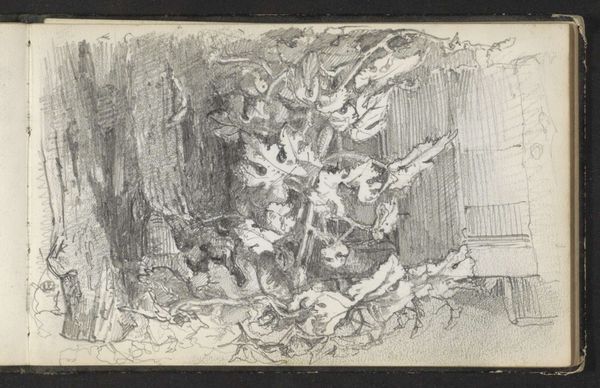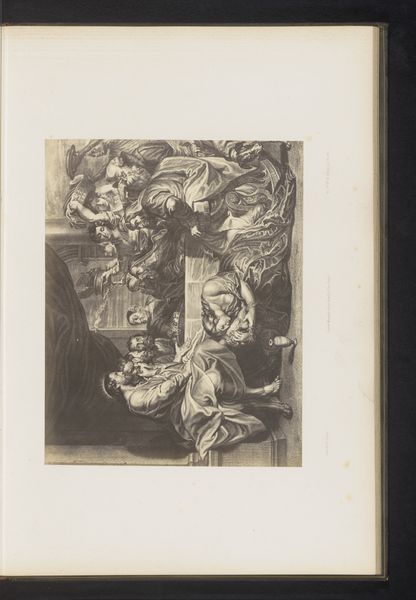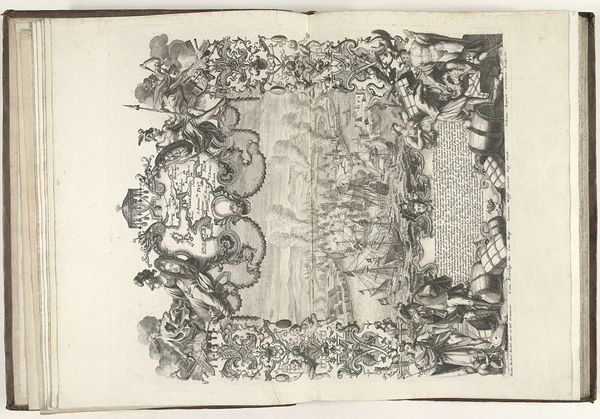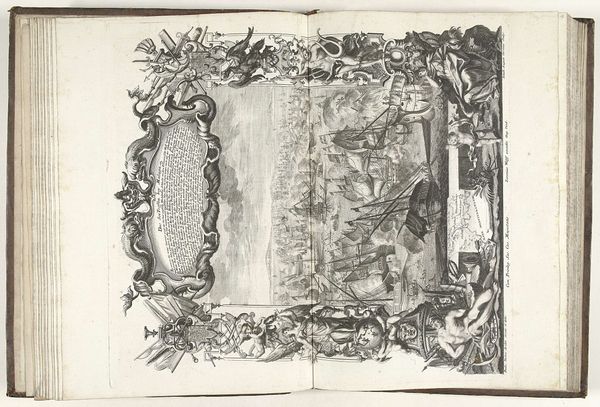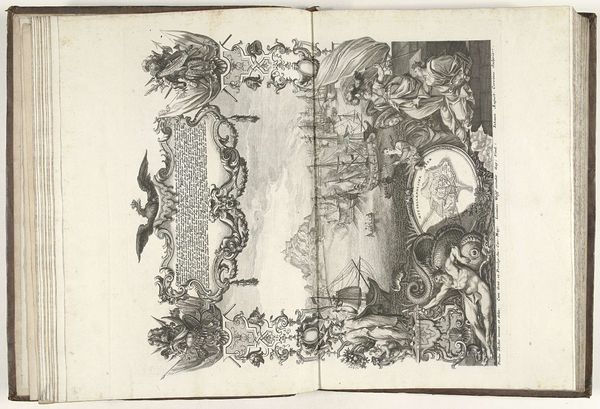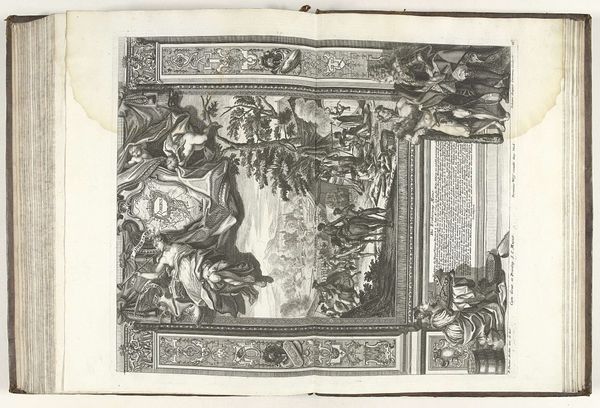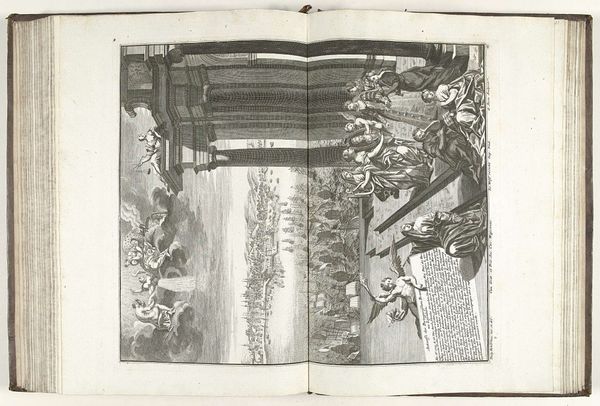
drawing, ink, engraving
#
drawing
#
baroque
#
pen drawing
#
ink
#
history-painting
#
engraving
Dimensions: height 458 mm, width 386 mm
Copyright: Rijks Museum: Open Domain
Curator: Well, this is quite the scene! We’re looking at Johann August Corvinus's "Slag bij Malplaquet, 1709," made sometime between 1712 and 1715. It’s currently housed here at the Rijksmuseum. Editor: My immediate impression is… organized chaos! The Baroque style, that pen and ink—it’s so intricately detailed, I'm almost overwhelmed. A very strange way to visualize this subject in such an organized way. Curator: It's fascinating how historical battles become embedded in our collective visual memory, isn't it? The imagery, though specific to the Battle of Malplaquet, taps into the broader cultural understanding of war and sacrifice, offering a coded narrative of victory. Editor: Yes, but also this curious overlay of celestial figures—are those angels watching over the carnage? What’s so mind-bending is this idea of the objective bystander and what such distance gives a sense of power and control of this situation. Curator: Right, these allegorical figures, they offer a symbolic layer. Notice the banners and cartouches brimming with text? This engraving is dense with meaning. We’re seeing not just a battle, but also a construction of historical memory—the narratives, the justifications, and perhaps even the glorification of conflict. The history-painting really comes to life here, a medium used for many years, a visual representation that’s powerful because people are able to look up at the image to gather an understanding of something. Editor: What hits me is this contrast—the refined etching style against the rawness of the battle it depicts. There's an element of distance, like we're observing from afar. That is very present in Baroque style, too, and very much speaks to history being the object being discussed at that current moment, as opposed to feeling something that’s currently happening. Curator: Precisely. Corvinus's rendering prompts us to reflect on how conflicts shape collective memory and historical narratives. A time to remember things and reflect on history with accuracy is key. Editor: Ultimately, the power of "Slag bij Malplaquet, 1709," lies in its emotional subtlety, that silent understanding that war changes people, and those affects carry on for long. Curator: Indeed. These symbols really create a rich picture to experience.
Comments
No comments
Be the first to comment and join the conversation on the ultimate creative platform.

